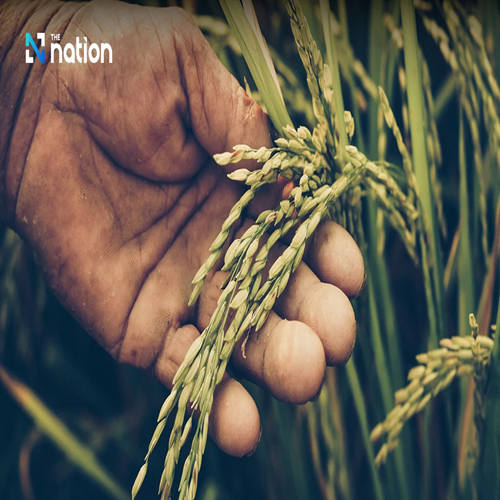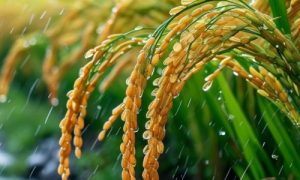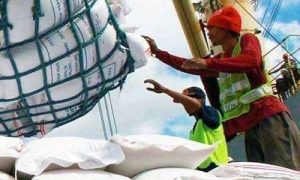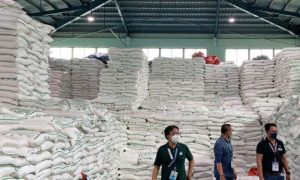ICAR’s big contribution to Goa’s rice heritage

Goa’s staple food, xit-kodi ani nuste, draws locals and tourists alike. ICAR-Goa’s geneticist Dr. Manohara K K focuses on salt-tolerant rice varieties to combat field challenges. Collaborations yield Goa Dhan 3 and 4 for coastal conditions. The research shifts to dual stress-tolerant varieties due to climate change. Rice remains integral to Goan culture, with traditional dishes and ceremonies. Manohara emphasizes genetic solutions for salinity, vital for sustainable agriculture amid environmental challenges.
No matter where they go, after being away from Goa for a while, Goans soon crave their xit-kodi ani nuste (fish-curry-rice), something they’ve grown up consuming every day.
So naturally, their first move as they touch down in the State is heading to a Goan restaurant and relishing a thali.
And, it isn’t just the people of Goa; the staple food is much sought-after by tourists as well, who take great pride in learning what goes into the curry and a few fish names in Konkani as well.
But, not many know about the nourishing rice varieties that are grown in the State.
As the monsoons set in, agriculturists and farmers take on the task of transforming Goa’s fields into hues of green. Preparing the land for sowing, raising the paddy crop, some working round the clock for a good harvest, ensuring food reaches everyone’s plate.
“Our research work is to ensure quality seed production,” says Dr Manohara K K, plant breeder/ geneticist at ICAR-Goa, highlighting the important role that seed plays in ensuring a good crop.
“Using good quality seed itself takes care of 60-70 per cent of the problem,” he adds.
When he joined the Central Coastal Agricultural Research Institute (ICAR) in the year 2009, he realised that the biggest problem (when it comes to paddy) was the salt water infiltration in fields, which hampered the growth of rice varieties like Jaya, Jyoti etc.
Such salt-affected soils/fields are locally known as khazan fields.
“Like human beings, nature, too, has a resistance. As such, there are certain varieties that are tolerant to a given abiotic stress like salinity, drought or submergence. So, we began to identify a variety that was salt-tolerant,” he informs.
Korgut and Assgo were two salt-tolerant local varieties identified.
Back in 2010, Dr Manohara, along with his team, set out to find a solution and managed to collect around 20 local varieties of rice — Damgo, Mungo, Bello, Kalo Korgut, Shiedi and others.
“In his book Fish, Curry, Rice, Claude Alvares mentions 30 rice varieties cultivated in the State. But, we weren’t able to collect all, which means some were already extinct,” he expressed concern.
Apart from the 20 varieties, ICAR today maintains around 160 local varieties that have been collected from neighbouring Karnataka and other coastal regions as well.
“Through selection, we released two varieties of Korgut — Goa Dhan 1 and Goa Dhan 2 — in 2017,” he mentions, adding that these were performing well, and genetically, nothing was changed within these varieties.
Although Korgut was salt-tolerant, it didn’t fare well in yield compared to Jaya and Jyoti. So in 2019, as a plant breeder, Dr Manohara decided to crossbreed two varieties.
“We selected Jyoti because it was a popular variety in Goa. One needs to ensure that local varieties are selected as ultimately, consumer taste matters,” he smiles.
Out of the 246 lines that resulted from cross-breeding Korgut and Jyoti, one line (RIL 238), that was high in salt-tolerance and yield, was released as Goa Dhan 4.
On the other hand, a collaboration project with the International Rice Research Institute (IRRI), Philippines, led to the release of Goa Dhan 3. “After receiving 45 lines from them (IRRI), we grew them at our farm in Chorao. Goa Dhan 3 was the line that did well under our conditions,” he says.
From savouring the humble pez (or canjee) to preparing some sakhar bhat, sannas, shevyo and fov, rice is so integral to Goans, and is even part of traditional ceremonies and religious celebrations.
“Being a geneticist, I got to know that around 18,000 ha of land was affected by salinity along the coast. Controlling it was one difficult option, the other was tackling it genetically, so that’s what I targeted from the beginning.”
Initially, ICAR’s research leaned towards developing salt-tolerant varieties, but due to climate change and erratic rainfall, resulting in waterlogging especially in July-August, from 2017-18, the focus has shifted to developing dual stress tolerant paddy varieties which can sustain both salinity and submergence.
From savouring the humble pez (or canjee) to preparing some sakhar bhat, sannas, shevyo and fov, rice is so integral to Goans, and is even part of traditional ceremonies and religious celebrations.
“Being a geneticist, I got to know that around 18,000 ha of land was affected by salinity along the coast. Controlling it was one difficult option, the other was tackling it genetically, so that’s what I targeted from the beginning.”
Initially, ICAR’s research leaned towards developing salt-tolerant varieties, but due to climate change and erratic rainfall, resulting in waterlogging especially in July-August, from 2017-18, the focus has shifted to developing dual stress tolerant paddy varieties which can sustain both salinity and submergence.
Source Link : https://www.gomantaktimes.com/lifestyle/icars-big-contribution-to-goas-rice-heritage














